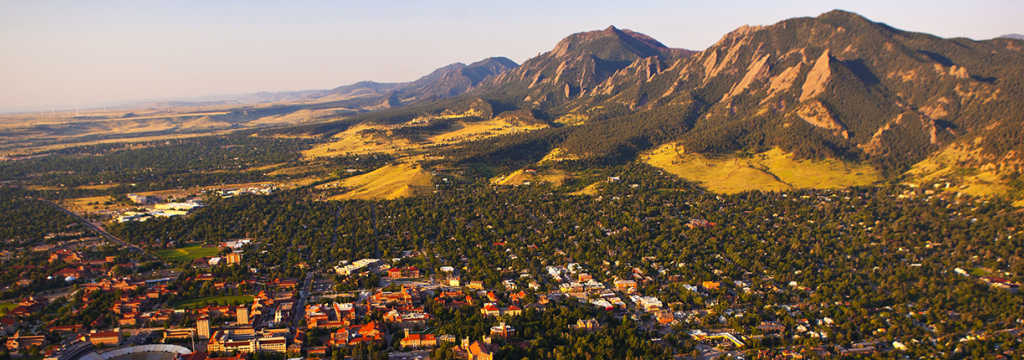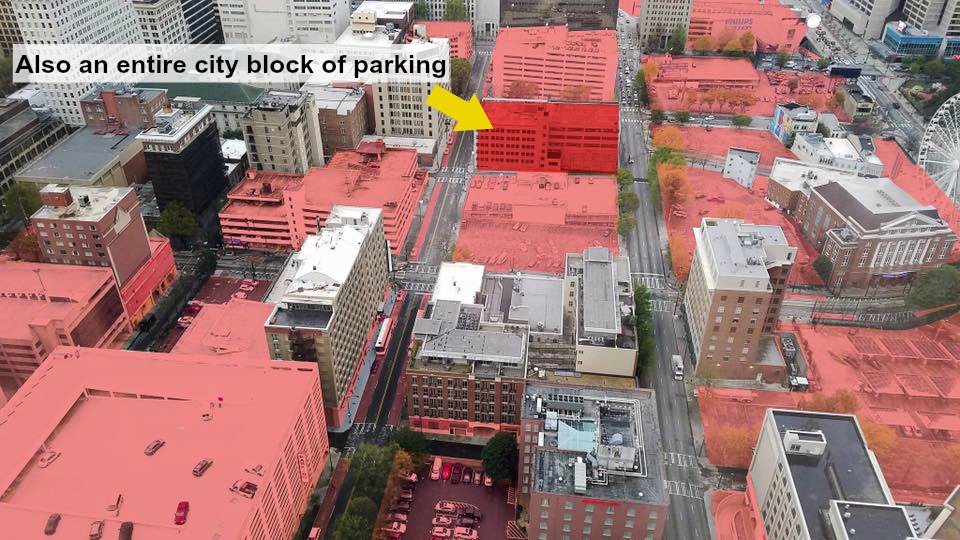I know it has been a while since I have last posted on my planning blog (over a year in fact), but lately, I have been feeling an urge to rekindle my love for policy, innovation, and writing on this public platform. I've have made a few changes of course: this blog will cover a broader range of subjects in the field of planning (beyond just Atlanta developments), so the name has changed and you may find a different direction in my approach to the new posts. Looking back over my old posts, I find it interesting what posts have become true and what posts have been left for the shelves. I encourage you to look over them too, for the change Atlanta has seen in just this small amount of time is remarkable.
 |
| Boulder, Colorado and its distinct growth boundary seen along its periphery |
In regards to this blog post, I will be focusing on a piece of policy that I find particularly interesting: urban growth boundaries. Urban growth boundaries (referred to as UGBs) are instituted by usually city (but sometimes state) government where the city draws a line around how far they're willing to develop the land. These boundaries usually stem from an environmentalist movement to protect the surrounding environment outside the city. What these boundaries do is much more than protect the environment, though. Urban growth boundaries sets a defined piece of land where the government will provide services such as electricity, plumbing, and safety. Beyond that line, the boundary signifies that the city will no longer provide for development. It is a wonderful resource to curb sprawl and help protect the environment. In addition, it forces development in on top of itself. Instead of creating more sprawling housing estates, the government has indicated they want more orderly, defined, and organized housing estates that reduce sprawl and increase walkability. It takes focus off the road and toward alternative ways of getting around such as walking, biking, or taking mass transit. It reutilizes spaces previously thought useless inside the boundary because people are forced to make the most (and the best) use of their land. Cities such as Boulder, Colorado have successfully instilled urban growth boundaries, and the improved quality of life certainly sings praise to this policy's effectiveness.
 |
| Portland, Oregon- and its regional growth |
One state that requires all of its municipalities to have an urban growth boundary is Oregon. Back in the 1970's, the state acted upon its maverick culture and produced a law that would require every municipality to make a precise boundary, and viewing the state today, it is clear that gamble has paid off. Where in most of rural America, small towns are dying out, farming communities failing due to a lack of investment, main street being moved to the Wal-Mart that opened up on the highway, in Oregon, its small towns still seem to have remained vibrant centers of commerce. The same has occurred to its larger cities. Instead of sprawling over the valley it is based off of, Portland and its suburbs are instead a dense, connected, organized region of growth. The urban growth boundary has really impacted all parts of life in Oregon. The rural parts remain agriculturally-bounded due to strict zoning, and the general authentic nature of the state is preserved. In its suburbs, while the car does dominate mobility, but they are still what their name indicates: extension of the urban ring. Portland suburbs are connected to downtown by different forms of mass transit, and when people need to go shopping, instead of driving to the local mall, they take the local train to the downtown's shopping district. The old urban neighborhoods are thriving in Oregon, too. Instead of being forgotten by newer and newer neighborhoods on the fringes of the region, these neighborhoods have been redeveloped and new infill has made them vibrant, exciting neighborhoods to live in. And maybe the best centerpiece to the urban growth boundary are that Oregon's cities have thriving downtowns. Downtown Portland is 150 blocks of life. Its walkable streets exude life on every corner because the urban growth boundary has preserved just that: life in downtown.
So, if urban growth boundaries had such a profound effect on Oregon and its major city, I wondered what it could do for Georgia and its major city. Ryan Gravel, who originally thought of the Atlanta Beltline and author of
Where We Want to Live, argues that Atlanta needs an urban growth boundary immediately, if any essence of order is to be preserved in Atlanta. Yet, I wonder if the state of Georgia government put forth a UGB would it even make a difference for the sprawling behemoth or is it too late for Atlanta? (Comment below what you think! I'd love to hear your thoughts.)
 |
| Savannah, GA- perfect place to implement UGB |
Personally, I find there is need for UGB law in Georgia, but its necessity isn't for Atlanta, yet its second-tier cities such as Augusta, Savannah, Macon, and Columbus. These cities and their regions could really benefit from a UGB. They're still small enough in size that restricting and channeling growth to certain areas could really benefit and dramatically improve the quality of life for these small cities. One reason I believe UGB was so successful in Portland's region is because the size of the region was around 1 million people, a still very manageable number. All of Georgia's second-tier cities are less than 1 million people, so I find this good news. In addition, they all have either strong rural industries or natural beauty that desire protection from regional encroachment. Putting forth boundaries could really alter and rehabilitate some of Georgia's smaller cities.
 |
| Atlanta's current MPO includes 18 counties |
I also think Atlanta (or its region I should say) needs an urban growth boundary. Specifically, one line that encircles the entire region and is an end to all new sprawling development. Within this line, I propose the sprawl and sporadic development that has accompanied Atlanta's growth can still happen, but outside of it, there needs to be an immediate stop. If we don't draw a boundary, if we don't say enough is enough, then what we recognize as "Atlanta" will literally become one long suburb from Alabama to South Carolina and from Macon to Tennessee. I do think its too late in that urban growth boundaries won't produce the same effects as it had for Portland, but it will curtail and change the way we grow and live very gradually.
One argument against UGB is that it prevents businesses and developers from expanding and developing. But this is not true. In Portland, even after 30+ years with UGB, there are still lots of developable land within the region. So UGB isn't anti-business, but it is anti- letting businesses do whatever they wish anymore. Allowing corporations like Pulte to buy massive tracts of land and convert them into gigantic housing estates needs to be stopped because it hurts our region. But, it nevertheless won't be stopped because doing that makes the biggest bang for your buck with these corporations, and their main focus isn't design and livability but
money. We shouldn't prevent a better Georgia because business says otherwise, we should make a better Georgia and show the businesses who really owns this land.
I am a proponent of urban growth boundaries. They're an excellent way to reshape, redefine, and recreate a city and its region. I believe putting them into law in Georgia could provide the state with what this post is: a new start.







